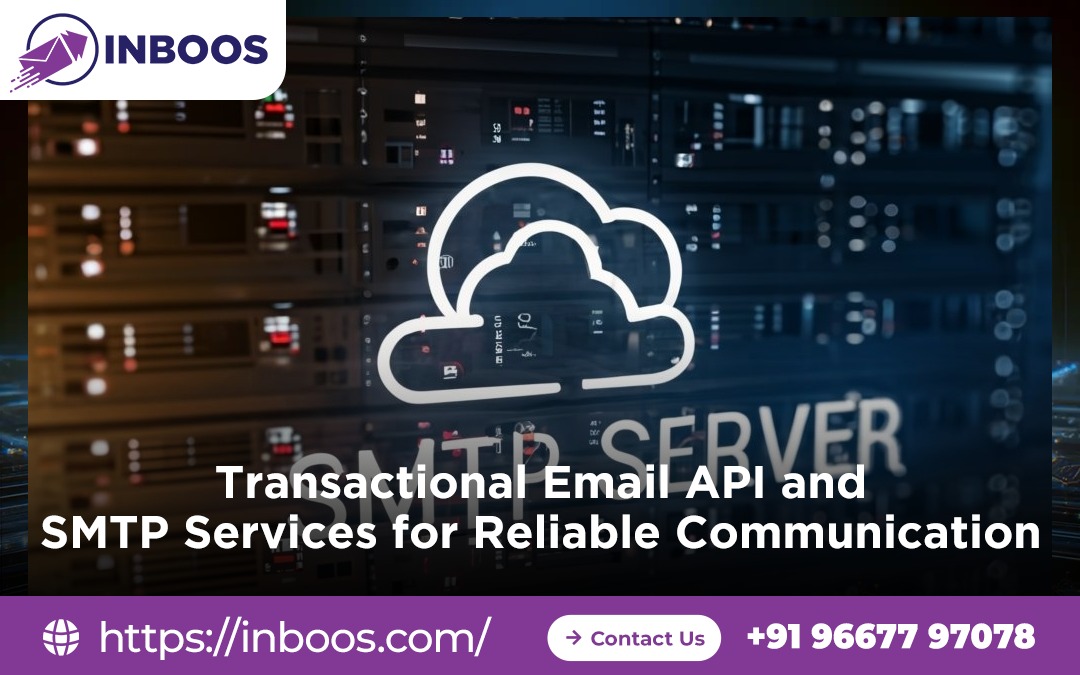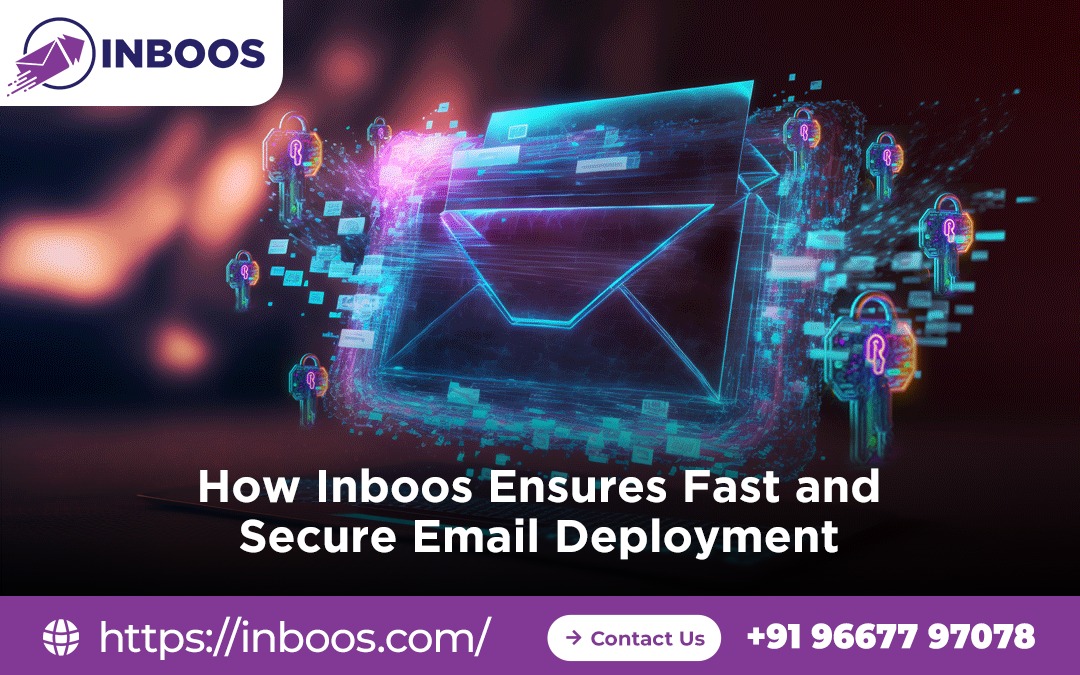In the modern application landscape, email remains an indispensable communication backbone. Whether you’re building a SaaS platform that sends critical user notifications, an e-commerce store with order confirmations, or a content site dispatching newsletters, reliable email delivery is non-negotiable.
However, attempting to build a robust email sending infrastructure from scratch – managing SMTP servers, IP reputation, deliverability, and analytics – is a colossal task. It’s fraught with challenges like low deliverability rates, blacklisting, scalability bottlenecks, and compliance headaches.
This is where Email Service Provider (ESP) APIs come into play. They abstract away the complexities of email infrastructure, allowing developers to integrate powerful, scalable, and highly deliverable email functionality with just a few lines of code. This guide will walk you through the entire process, from choosing an ESP to implementing advanced send logic.
Why Use an Email API? The Developer’s Perspective
For developers, the decision to use an ESP API is a strategic one, freeing up valuable time and resources to focus on core application logic.
- Superior Deliverability & Reputation Management:
- ISP Relations: ESPs maintain strong relationships with major ISPs (Gmail, Outlook, Yahoo) and understand their ever-changing rules.
- IP Warming & Reputation: They manage dedicated or shared IP pools, meticulously warming them up and maintaining a pristine sending reputation. Attempting this with a self-hosted server is a monumental, ongoing challenge.
- Authentication: ESPs guide you through correctly configuring critical authentication protocols (SPF, DKIM, DMARC) that prove your emails are legitimate.
- Blacklist Monitoring: They constantly monitor blacklists and take swift action if an IP becomes listed.
- Scalability & Reliability:
- High Throughput: ESPs are built to send millions of emails per hour, handling bursts of activity without breaking a sweat.
- Queuing & Retries: They manage complex queuing systems and retry mechanisms for transient delivery failures.
- Global Infrastructure: Distributed data centers ensure low latency and high uptime.
- Rich Feature Set & Efficiency:
- Analytics: Built-in dashboards provide granular data on opens, clicks, bounces, unsubscribes, and more.
- Templating Engines: Use dynamic templates to personalize emails without writing complex HTML in your code.
- Suppression Lists: Automatic management of unsubscribes and hard bounces, protecting your reputation.
- Webhooks: Real-time push notifications for email events, enabling immediate action in your app (e.g., updating user status on a bounce).
- Compliance: Most ESPs help you stay compliant with email regulations like GDPR and CAN-SPAM.
- Security: ESPs invest heavily in security measures to protect your data and prevent unauthorized sending.
Choosing Your Email API Provider – Key Considerations
Selecting the right ESP is a critical first step. While many providers offer similar core functionalities, their strengths, pricing, and developer experience can vary.
Table 1: Email API Provider Evaluation Checklist
| Feature/Consideration | Why It Matters for Developers |
| Deliverability Reputation | Most important. Directly impacts inbox placement. Research their standing. |
| API Documentation & SDKs | Clear, well-organized docs; official SDKs for your primary programming languages (e.g., Python, Node.js, PHP, Ruby). |
| Features | Webhooks for real-time events, robust templating, detailed analytics, bounce handling, suppression lists, dedicated IPs (if needed). |
| Pricing & Scalability | Cost per email, tiers, additional feature costs. Can it scale to your projected volume affordably? |
| Reliability & Uptime SLA | High availability is crucial for transactional emails. Look for clear Service Level Agreements. |
| Developer Support | Responsive and knowledgeable technical support. |
| Free Tier/Trial | Essential for prototyping, testing, and initial low-volume sending. |
| Email Type Focus | Some excel in transactional (fast, critical), others in marketing (bulk, segmentation). Choose based on primary use case. |
Export to Sheets
Popular choices include SendGrid, Mailgun, Postmark, AWS SES, and Resend, among others. Each has its nuances; explore their documentation and try their free tiers.
Core Concepts of Email API Integration
Before diving into code, understand these fundamental components you’ll interact with:
- API Keys/Authentication: These are unique, secret strings that identify your application and authorize it to send emails via the ESP’s API. You’ll obtain them from your ESP’s dashboard.
- Security Best Practice: Never hardcode API keys directly into your source code. Use environment variables, a secret manager (e.g., AWS Secrets Manager, HashiCorp Vault), or a
.envfile for local development.
- Security Best Practice: Never hardcode API keys directly into your source code. Use environment variables, a secret manager (e.g., AWS Secrets Manager, HashiCorp Vault), or a
- API Endpoints: These are specific URLs provided by the ESP to which your application sends HTTP requests. Common endpoints include:
POST /send: To send a single email or a batch.GET /messages/{id}/status: To retrieve the status of a specific email.POST /templates: To manage dynamic templates.
- Request Body (Payload): The data (typically JSON) you send in your API call. Key parameters include:
from: Sender’s email address and optional name.to,cc,bcc: Recipient email addresses (can be an array for multiple recipients).subject: Email subject line.htmlortext: The content of your email. Always send both for fallback.attachments: Base64-encoded file data.headers: Custom email headers for advanced use cases.tagsormetadata: Custom labels for categorization and filtering in analytics.custom_variablesormerge_tags: Data used for personalization within templates.
- Responses: The data (typically JSON) returned by the ESP’s API after your request.
- Success: Often an HTTP 200 or 202 status code, usually with a
message_idor similar identifier for tracking. - Errors: HTTP 4xx (client-side errors like bad request, unauthorized) or 5xx (server-side errors). The response body will contain error codes and messages to help you debug.
- Success: Often an HTTP 200 or 202 status code, usually with a
- Rate Limits: ESPs impose limits on how many API calls or emails you can send per second/minute/hour to prevent abuse and manage server load. Exceeding these limits results in
429 Too Many Requestserrors.
Step-by-Step API Integration: A Developer’s Walkthrough
Let’s break down the practical steps to get your app sending emails.
Step 1: Sign Up & Get API Credentials
- Choose your ESP: Select a provider based on the checklist above.
- Create an Account: Sign up on their website.
- Generate API Key: In your ESP’s dashboard (often under “API Keys” or “Settings”), generate a new API key. Grant it only the necessary permissions (e.g., “Send Mail”). Copy it immediately.
Step 2: Configure Domain Authentication (DNS Records)
This is absolutely crucial for deliverability and trust, even when using an ESP. ISPs verify these records to ensure your emails are legitimate. Your ESP will provide the specific DNS records you need to add to your domain registrar.
- SPF (Sender Policy Framework): A
TXTrecord that authorizes your ESP’s servers to send mail on your domain’s behalf. - DKIM (DomainKeys Identified Mail): A
TXTorCNAMErecord containing a public key that matches a private key used by your ESP to digitally sign your emails. - DMARC (Domain-based Message Authentication, Reporting & Conformance): A
TXTrecord that tells receiving servers how to handle emails that fail SPF/DKIM and provides you with reports.
Recommendation: Use a dedicated subdomain (e.g., mail.yourapp.com, notify.yourapp.com) for your application’s emails. This isolates your email reputation from your main domain (yourapp.com), protecting your primary website’s standing if email issues arise. You’ll set up the SPF, DKIM, and DMARC records for this specific subdomain.
Your Action: Log into your domain registrar (e.g., GoDaddy, Cloudflare) and add the TXT (and possibly CNAME) records provided by your ESP. Allow 24-48 hours for DNS propagation. Your ESP dashboard usually has a validation tool to confirm they are set correctly.
Step 3: Install the SDK/Client Library
Most ESPs provide official SDKs for popular programming languages. These abstract away the complexities of HTTP requests and API authentication.
Example (Python using a hypothetical SDK):
Bash
# Using pip for Python
pip install your_esp_sdk
Example (Node.js using a hypothetical SDK):
Bash
# Using npm for Node.js
npm install your-esp-sdk
Initialize the Client in your application:
Python
# Python
import os
from your_esp_sdk import Client
api_key = os.getenv("YOUR_ESP_API_KEY") # Recommended: load from environment variable
client = Client(api_key=api_key)
# Node.js
const client = require('your-esp-sdk')(process.env.YOUR_ESP_API_KEY);
Step 4: Implement Basic Email Sending
Start with a simple function to send a single email.
Python
# Pseudo-code Example (Python)
def send_single_email(recipient_email, subject, html_content, text_content=None):
try:
response = client.send(
to=recipient_email,
from_email="noreply@yourapp.com", # Use your authenticated domain/subdomain
subject=subject,
html_body=html_content,
text_body=text_content
)
print(f"Email sent successfully! Message ID: {response.message_id}")
return response.message_id
except Exception as e:
print(f"Failed to send email: {e}")
# Log the error details for debugging
return None
# Example Usage:
send_single_email("user@example.com", "Welcome to My App!", "<p>Hello! Thanks for signing up.</p>")
Step 5: Implement Mass/Personalized Email Sending
For notifications, newsletters, or any email sent to multiple users, you’ll want to leverage batch sending and dynamic templating.
- Batch Sending: Many APIs allow sending multiple emails in a single API call by providing an array of recipient objects. This is far more efficient than individual calls.
- Dynamic Templates: Design your email templates (e.g., “Order Confirmation,” “Password Reset”) within your ESP’s dashboard using their templating language (e.g., Handlebars, Jinja-like syntax). Then, pass dynamic data (variables) through the API for each recipient.
Python
# Pseudo-code Example (Python) for Personalized Batch Sending with Templates
def send_personalized_batch(recipients_data, template_id, default_from="noreply@yourapp.com"):
messages = []
for user_data in recipients_data:
messages.append({
"to": user_data["email"],
"subject": user_data["subject"], # Subject can also be dynamic
"template_id": template_id,
"variables": user_data["template_vars"] # Dictionary of variables for the template
})
try:
response = client.send_batch(
from_email=default_from,
messages=messages
)
print(f"Batch send initiated: {response.status}")
return response
except Exception as e:
print(f"Failed to send batch: {e}")
return None
# Example Usage:
users_to_notify = [
{"email": "alice@example.com", "subject": "Your New Feature!", "template_vars": {"name": "Alice", "feature_name": "Dark Mode"}},
{"email": "bob@example.com", "subject": "Your New Feature!", "template_vars": {"name": "Bob", "feature_name": "Analytics Dashboard"}},
]
send_personalized_batch(users_to_notify, "new_feature_announcement_template")
Step 6: Handle Attachments
If your emails require attachments, they usually need to be Base64 encoded before being included in the API request body.
Python
# Pseudo-code Example (Python) for sending with an attachment
import base64
def send_with_attachment(recipient_email, subject, html_content, file_path):
with open(file_path, "rb") as f:
file_content = base64.b64encode(f.read()).decode('utf-8')
attachment = {
"content": file_content,
"filename": os.path.basename(file_path),
"type": "application/pdf" # Or other MIME type
}
try:
response = client.send(
to=recipient_email,
from_email="noreply@yourapp.com",
subject=subject,
html_body=html_content,
attachments=[attachment]
)
print(f"Email with attachment sent! Message ID: {response.message_id}")
except Exception as e:
print(f"Failed to send email with attachment: {e}")
# Example Usage:
send_with_attachment("user@example.com", "Your Invoice", "<p>Please find your invoice attached.</p>", "/path/to/invoice.pdf")
Advanced Integration & Monitoring for Robustness
For mission-critical applications, consider these advanced strategies:
- Asynchronous Sending with Queues:
- Problem: Direct API calls can block your application’s main thread, slowing down user experience or API responses, especially for high volumes.
- Solution: Implement a message queue (e.g., RabbitMQ, Redis Queue, AWS SQS, Azure Service Bus) and background workers. Your application pushes email tasks to the queue, and workers consume these tasks to make API calls to the ESP.
- Benefits: Decouples email sending from your core app, improves responsiveness, adds resilience (retries for failed jobs), and handles bursts more gracefully.
- Leveraging Webhooks for Real-time Feedback:
- What: Webhooks are HTTP callbacks that your ESP sends to a specified URL in your application whenever an email event occurs (delivered, opened, clicked, bounced, spam complaint, unsubscribed).
- How: Configure webhook URLs in your ESP dashboard. Build a dedicated endpoint in your app to receive and process these POST requests.
- Benefits: Real-time list hygiene (immediately remove bounced addresses), accurate user engagement tracking, and proactive customer support (e.g., notification if a critical email bounced).
- Robust Error Handling & Logging:
- Implement comprehensive
try-catchblocks around all API calls. - Log specific error codes and messages returned by the ESP API.
- Implement retry logic with exponential backoff for transient errors (e.g., rate limit errors, temporary server issues).
- Log the
message_idreturned by the ESP for every sent email; it’s invaluable for debugging specific delivery issues.
- Implement comprehensive
- Suppression Lists: Your ESP automatically maintains lists of bounced and unsubscribed email addresses. Your application should respect these and avoid sending to them, but also consider periodically syncing these suppression lists back to your own database for internal record-keeping.
- Inbox Placement Monitoring: Beyond opens/clicks, use dedicated tools (or your ESP’s features) to test where your emails land across various ISPs (inbox, promotions tab, spam folder). This is crucial for proactive deliverability management.
Common Developer Pitfalls to Avoid
- Hardcoding API Keys: A major security vulnerability. Use environment variables or a secret manager.
- Ignoring DNS Authentication: Without SPF, DKIM, and DMARC, your emails will consistently land in spam.
- Not Handling Bounces & Complaints: Failing to process these leads to damaged sender reputation and wasted sends. Utilize webhooks.
- Synchronous Sending for High Volume: Blocking your application’s main thread for email sends is a performance killer. Use queues.
- Ignoring ESP Rate Limits: Hitting rate limits will result in 429 errors and blocked sends. Implement retry logic with exponential backoff.
- Sending to Unverified/Unsubscribed Users: This leads to high bounce rates, spam complaints, and can get your account suspended. Maintain clean lists.
- Over-Reliance on Single IP/Domain: For very high volumes, consider dedicated IPs and using separate subdomains for different email types (transactional vs. marketing) to isolate reputation risk.
Conclusion
Connecting your application to a reliable email API is a foundational step for any modern software. It offloads the immense complexity of email infrastructure and deliverability to specialized providers, allowing your development team to focus on building core features that deliver business value. By carefully selecting an ESP, implementing robust integration logic, and leveraging advanced features like webhooks and asynchronous processing, you can ensure your application’s email communications are always reliable, scalable, and impactful.
📩 Have Questions or Need Expert Help?
Our team is here to make your email marketing, bulk emailing, and mass emailing effortless and effective.
🚀 Let’s boost your deliverability, scale your outreach, and unlock better results!
👉 📌 Contact Us Today
 logo
logo




